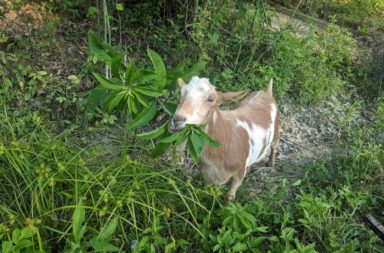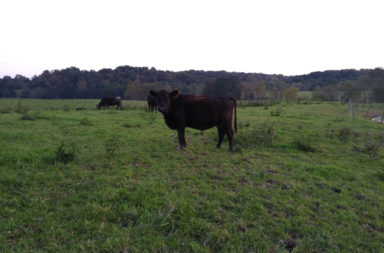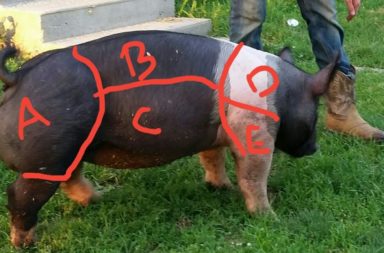Guineas are often referred to as the “poor man’s pheasant.” Their meat doesn’t taste as good as chicken, turkey, or duck, and their eggs are small and not delicious either – but they still should be part of your survival livestock plan.
Typically, guineas have only one job on a farm…to get eaten by predators. Now, some folks look at them as sacrificial lambs, but I prefer to think of guineas as my little assassins. They are the junkyard dogs of the poultry world. They will loudly let you know when a four or two legged predator has entered their domain – and I want to emphasize the world loud here, fellow preppers.
Guinea fowl will fight to the death to protect the poultry flocks they are tasked with supervising. They will kill not only mice, but snakes of all varieties, mink, and valiantly fail when coming up against raccoons and other large predators.
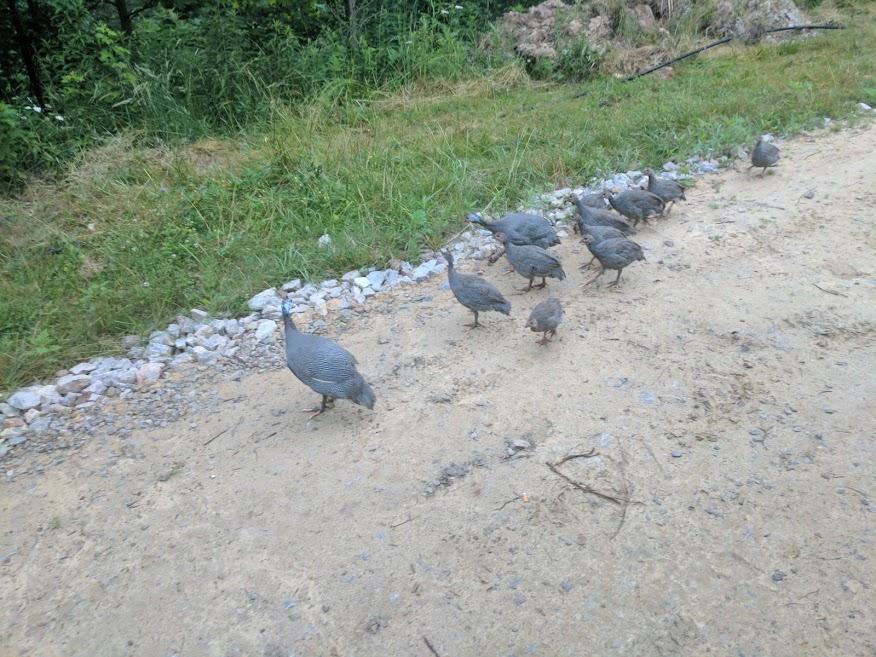 Guineas hail from West Africa but are kept by homesteaders, farmers, and preppers virtually all over the world. Unlike other birds, there are no true breeds of guineas. Instead, the fowl are classified by color and size – standard or jumbo.
Guineas hail from West Africa but are kept by homesteaders, farmers, and preppers virtually all over the world. Unlike other birds, there are no true breeds of guineas. Instead, the fowl are classified by color and size – standard or jumbo.
Some colors of guineas are a rare find, especially in America. Guinea Pearls are the most commonly found type of guineas in the United States and typically carry a price tag of about $5 each for young birds and $20 to $25 each for mature males or females.
Top 3 Reasons Preppers Should Keep Guineas
Guineas Are Cheap
Guinea fowl are incredibly inexpensive to raise because they free range around your barnyard – eating bugs (they LOVE ticks) and mice you don’t want around anyway.
Guineas Are Living Alarm Systems
Once you hear a guinea shriek its high-pitched voice, you will immediately understand why they are so heralded for being a natural alarm system for your survival retreat. When a flock of guineas get shrieking, it is almost deafening. Even if you are sound asleep an acre away, it is doubtful you will fail to hear the commotion. The guinea alarm system has often been known to scare of large and vicious predators like coyotes and fox.
Guineas Are Tough
Guinea keets (chicks) are smaller and more fragile than the offspring laid by chickens and ducks. But, if you can keep the keets alive for the first 30 or so days, they are incredibly hardy and will begin foraging for the bulk of their diet at a very early age. They are typically far less susceptible to most common poultry illnesses than ducks, turkeys, or chickens.
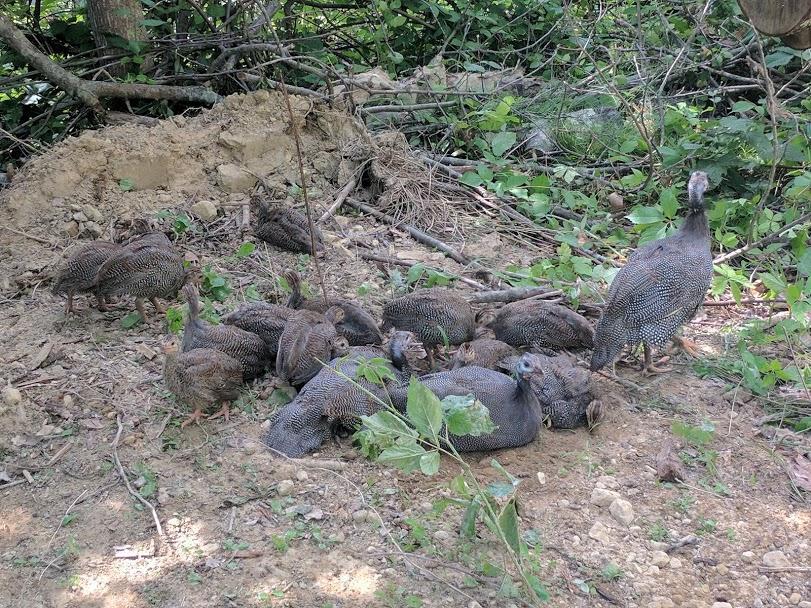 Guinea Facts
Guinea Facts
- Standard guineas weigh approximately three and a half pounds when mature. Jumbo guineas weigh about one pound more.
- Guinea eggs are approximately the same size Bantam chicken eggs, or slightly smaller when laid by a recently matures hen. The eggs are decidedly more fragile than chicken eggs and can often break under the weight of a broody hen. If you are trying to increase your flock or start a breeding business (guineas can be very hard to find unless ordered from a hatchery) the best results will be yielded using an incubator.
- If you opt to eat your guineas (never eat your breeders unless you are in a dire survival situation) you should expect to experience a wild game flavor that really is akin to pheasants. Guinea meat is considered a delicacy in some upscale restaurants due to their dainty bones and moist meat.
- Guineas grow at a substantially slower rate than chickens or ducklings. It is not recommended to keep keets in the same brooder as other poultry because they will likely get squished. Guinea keets often do what we keepers call a “pile” and can squished or smother themselves by stacking up inside a housing unit to keep warm and feel secure while cuddling together.
- Keets can also perish due to exposure to dampness. Keep the baby guineas both warm and dry to avoid sudden death – without any visible warning of illness.
- Sexing guineas is almost entirely impossible, the body and feathers of the fowl are simply too identical. Until you hear one guinea calling out what sounds like, “Come back, come back, come back” to other flock members or see little keets trailing along behind, you will really have no way of determining that the bird is a hen.
- Guineas typically start laying eggs in April or May, but some hens might not get into a broody mood and actually sit the eggs until the warm months of summer.
- Guinea hens are notoriously poor sitters. Most prefer to remain on barnyard patrol duty and can abandon her eggs, only going back to check on them sporadically.
- The fowl love to be high up, on a coop, in the trees, or even on top of a vehicle, as shown in the photo below. If you do a nightly beak and bill count on your flocks and notice a guinea hen is missing, she might be high up in a tree in a nest she made sitting her eggs.
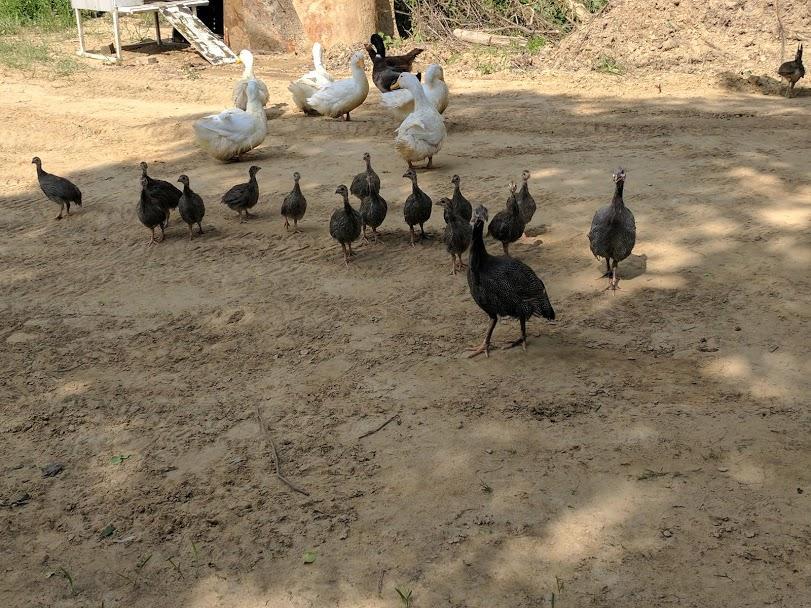 Most Popular Guinea Varieties
Most Popular Guinea Varieties
Pearl Grays
These guinea boast black, brown, and tan feathers under their wings. They also have a broad black stripe don their heads and orange narrow stripes between the darker stripes. and homesteaders. Pearl Grays are routinely regarded as one of the most calm and easiest to train varieties of guineas.
Jumbo Lavenders
Guineas of this variety have dark blue stripes and light blue feathers. They also have stripes and white spots on varying regions of their feathered bodies. Some mature Jumbo Lavender guineas can grow to weigh up to seven pounds.
Coral Blues
These guineas have light and dark blue striping on their back feathers and on top of their heads. Their toes, legs, and beaks are a beautiful shade of coral blue.
Standard Lavenders
Guineas of this type look almost identical to the jumbo variety, but can have more orange on their legs, beaks, and toes. They also have white and blue dots on some feathers.
Slates
These birds do not have any stripes on the deep or rusty red feathers. A purple-blue feathery collar appears around their necks once they mature.
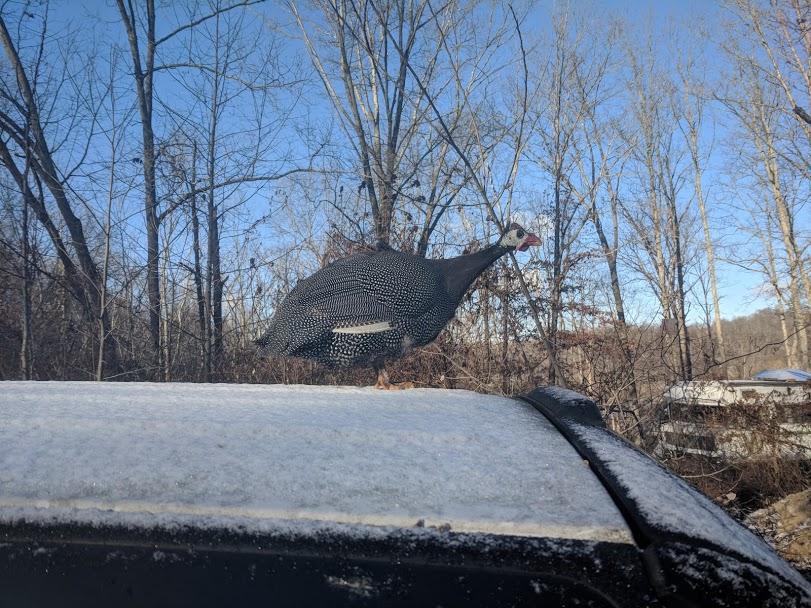 Guinea Habitat and Training
Guinea Habitat and Training
Guineas are an independent sort of bird, that is why they make such superb barnyard or prepper retreat “watchdogs.” They will not breed well in captivity and become more susceptible to illness and agitated if kept inside of a coop and run habitat like chickens and ducks.
If your suburban home is going to double as a bug in location or survival retreat, it may still be possible to keep guineas. Constructing an extremely spacious and tall run so the guineas can have ample freedom of movement, might suffice.
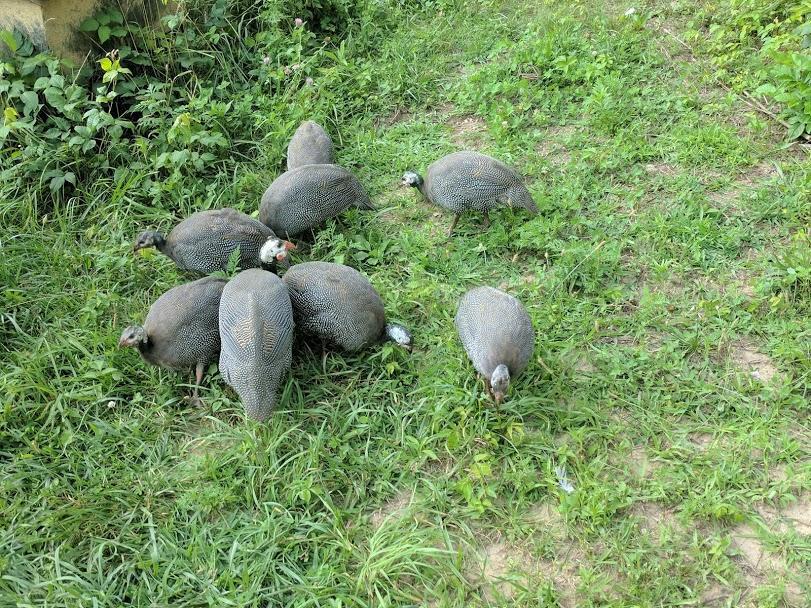 Is there are reason to keep guineas if they are kept in captivity like the chickens, ducks, and turkeys? Yes.
Is there are reason to keep guineas if they are kept in captivity like the chickens, ducks, and turkeys? Yes.
A flock of guinea fowl can still help prevent a predator from getting inside the coop or run and eating the other flock members and their eggs. Mink can meander through a hole not much larger than a quarter…and frequently do. Never use chicken wire to cover air vents or to construct a chicken run – it is only good for keeping birds in and not predators out, use hardware cloth (rabbit hutch wire) instead.
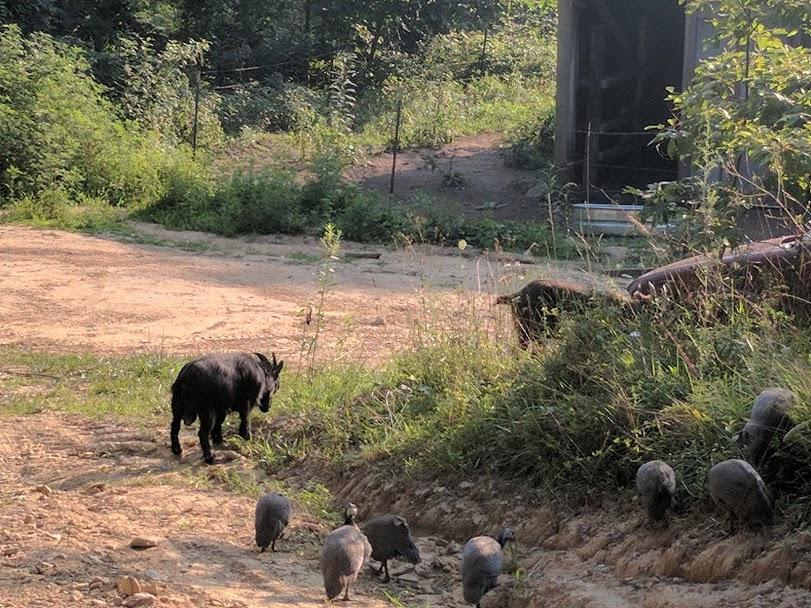
Guinea Coops
You must train your guineas to teach them their territory and to return to the coop at night. Keepers all have different philosophies on how to accomplish the training, but I am going to share with you only what has always worked well for me on our survival homesteading retreat.
I keep the guineas (not keets to avoid squishing – see part 1 of this guide to learn more) in the same run and coop with my ducks and chickens or in a large outdoor brooder placed flush against the run. This type of set up will allow the flocks to all get to know each other and get used to barnyard smells and sounds.
Many keepers do not allow guineas to leave their enclosure for two to three months so the birds learn the coop and run are their home. I free range all of the livestock on our prepper retreat, and simply cannot stand to see any animal living in a cage or on a chain. Now, we build large and sturdy enclosures to keep the animals in when necessary to protect them – like during a SHTF event, but on a regular day, they all roam our 56-acre survival retreat.
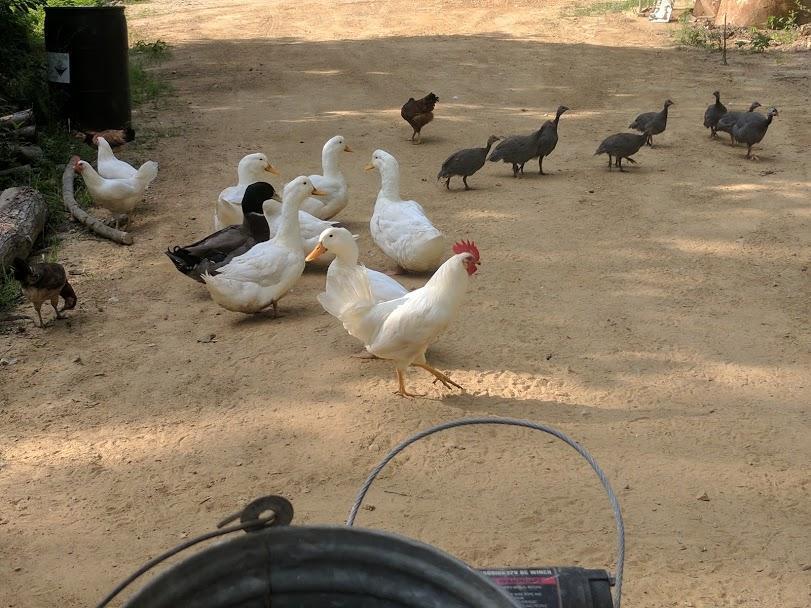
Because of my personal husbandry philosophy, I can never stand to keep juvenile or mature guineas in an enclosure for more than two weeks. I give all of the livestock a little treat at put up every night. Having all of the animals come back to their habitats at night not only allows me to do a head count, but also a quick health check on each critter.
The animals all know to head to their respective barns, stalls, coops, or pens by dusk so they do not miss snack. While the guineas are kept in the coop and run or brooder, they too get snack at dusk, as part of their training.
Once freed to roam during the day, the guineas have never failed (unless killed defending the flock) to turn back up for count by dusk. Sometimes a male guinea prefers to sleep on top of the coop or the run door instead of going inside during warm weather, and that is fine with me.
Some keepers of guineas prefer to clip the wings of the birds to prevent them from flying away or roosting in trees. I do not like to ever curtail an animal’s natural tendencies and never clip wings…and haven’t had any guinea or chicken opt to leave my prepper retreat yet….my Pekin ducks are too large to really fly and they love it here too.
Guinea Feed
- Guinea keets will forage for some of their food from an early age, but will need their diet supplemented with a poultry feed with a 25 percent protein ratio.
- Juvenile guineas need a poultry feet with only 20 percent protein until they reach maturity.
- Mature guineas will forage for almost all of their dietary needs except during the winter months, and only need a 16 percent protein ratio in their feed. You can up the protein ratio slightly during the winter months or if the flocks is not free ranging.
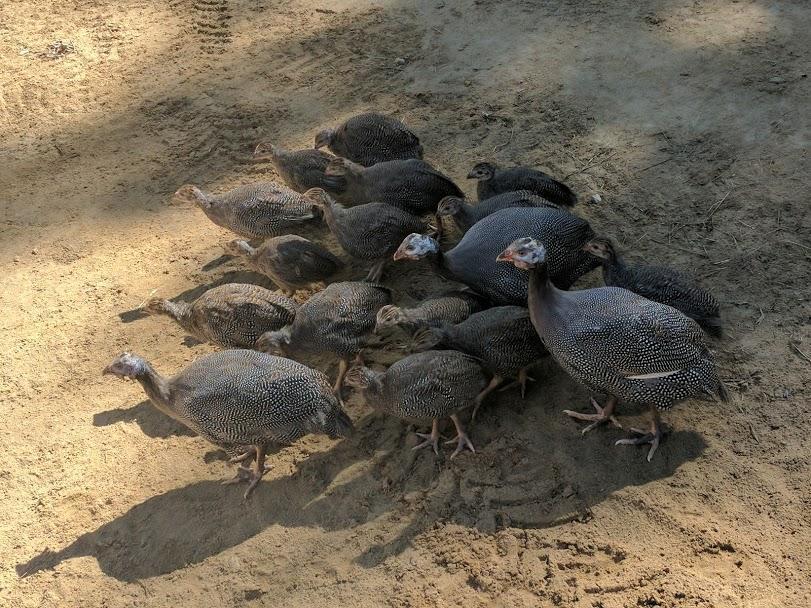 Guinea Husbandry Tips
Guinea Husbandry Tips
- Guineas really do not like entering dark places – even though they have no actual fear of the dark. Placing a solar-powered light inside the chicken coop should deter any apprehension the fowl will have about getting put up at night. A light inside the coop should also help the chickens and ducks continue laying longer into the winter months when the days grow short.
- Guineas will intermingle freely with your flocks of ducks and chickens – as long as you don’t have a particularly spiteful rooster. Keeping guineas in captivity or in a small free ranging area with turkeys is not advised.
- Fertility generally decreases in guineas when they are mature and forced to live in confinement.
- Like chickens, guinea hens love to take a dust bath on a regular basis – this really helps to prevent and get rid of mites and similar infesting parasites.
- If a rooster does not have any hens to mate with, it will attempt to mate with a guinea. If the rooster is successful, then end result will be an incredibly odd and vulture type looking bird that is fertile. A guinea cock may also attempt to mate with hens, garnering the same unpleasant results, if no hens of its own flock are available.
- Keeping one guinea cock per hen is the recommended flock ratio for a beginner or small acreage keeper.
- Guinea cocks typically remain robust and fertile for about five years before needing to be allowed to retire from the breeding process.
- Do not ever try to grab a guinea by the leg to catch it like is often done with chickens. Engaging in this practice will frequently cause a broken leg and soetimes a broken beak as the bird tries with every ounce of might it has, to break free. Instead, rap both hands around the back and wings of the guinea to pick it up – this is so not an easy thing to do. Guineas retain much of their wild nature and do not tolerate lap sitting, petting, or handling like domesticated chickens and ducks – but are smart and will mind your commands the bulk of the time.
Finally, let’s turn our attention to egg incubation and breeding tips.
Guinea Egg Incubation and Breeding
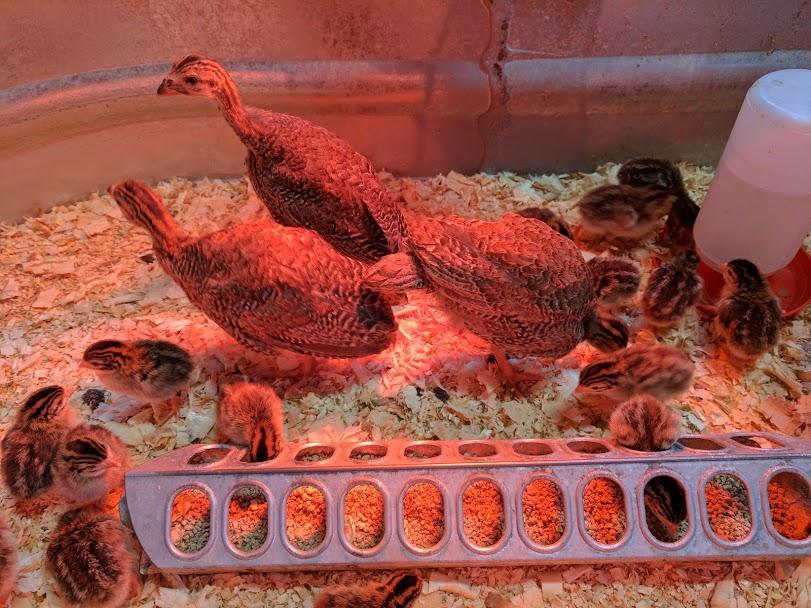
Breeding and raising guineas is not an easy task, it is actually the only aspect of dealing with these birds that is time-consuming or problematic. Guineas have no issue breeding on their own, it is handling their fragile eggs and equally delicate keets (baby guineas) that provokes the frustrating issues.
Guinea Breeding Tips
- As noted in part 2 of this guinea husbandry guide, keeping one cock per every five hens is the optimal flock ratio recommended. Once the male guinea reaches the age of five, sometimes three, years old, its fertility will have declined significantly.
- Mature male and female guineas tend to show some signs of outward affection towards each other and do not like to be separated. When the breeding groups are too far away from each other, they will produce their high-pitched shriek to check on their significant others and urge them back.
- You can divide up your cocks and hens into different sleeping quarters to separate them out to achieve a good male to female ratio, but this really isn’t necessary. Guineas tend to divide up into polygamous style couples all on their own.
- When the weather warms up in the spring and summer, guinea cocks will chase around their hens to mate and can fight younger males to run them off to avoid any competition.
- Hens often chase around the cocks if they are an experienced female and the cock is young – establishing dominance.
- When a cock begins the mating process, they will catch a hen and tug on her back feathers to force her to submit. You might think two guineas are in a brutal fight the first time you witness the mating process.
- After what looks like a fight has ended, the cock will mount the hen. Typically, the cock wants some privacy to mate and will complete this task in rapid fashion.
- Guinea cocks are a determined lot. Once they are ready to mate, they will chase a hen for even up to an hour to catch her, even flying and running up a tree to get his way.
- Guinea hens usually lay their eggs in a nest they make in a tree or in the secluded underbrush on the verge of the end of their established territory.
- If the guinea hen decides to actively sit her eggs, her mate will patrol around the nest area relentlessly to protect his family.
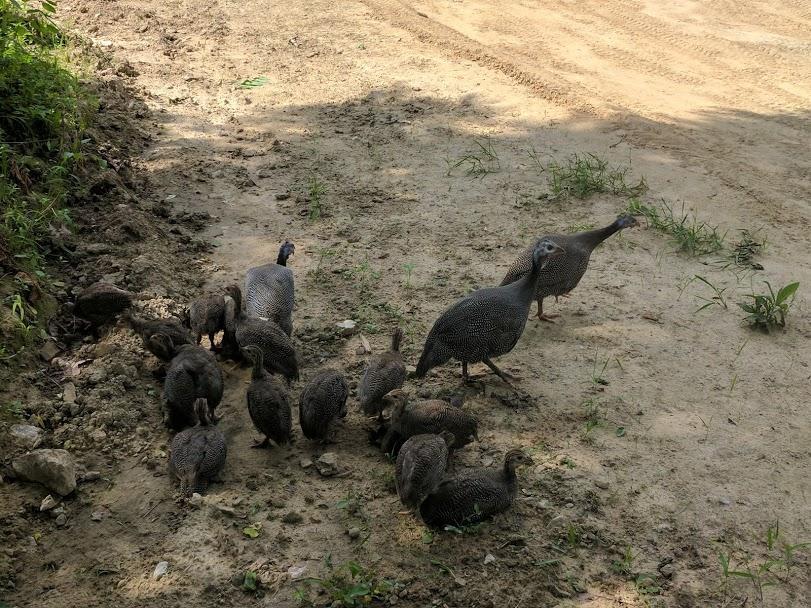 Guinea Incubation And Brooding Tips
Guinea Incubation And Brooding Tips
- The incubation period for guinea eggs commonly ranged from approximately 26 to 28 days.
- When incubating guinea eggs, keep them at a temperature that ranges between 95 to 100 degrees. The young keets need to remain inside a brooder at this same temperature until they are one week old. Make sure the brooder does not allow in any drafts or excess moisture during the keets first few weeks of life.
- Decrease the brooder temperature by five degrees after the first seven days – and by the same amount each week, until you have reached a standard room temperature. This process takes about six weeks. I follow these recommended guidelines in the winter and early spring, but if the guineas hatch during the summer, I generally use an outdoor brooder after two or three weeks – without any added heat source.
- A guinea hen is typically capable of sitting up to 15 eggs. If you do not have an incubator and the hen refuses to sit her eggs, try to slip them under a broody bantam hen – they might just hatch if they do not get crushed.
- Provide Luke warm water to the keets to drink for the first two to three weeks. It is best to give the baby guineas Luke warm to warm water to drink during the first seven days after hatching. To give the keets a solid energy boost if they have been shipped to you by a breeder, pour about 3 tablespoons of sugar per every 1 quart of water provided. I generally put a pinch or two of both cinnamon and oregano in all poultry water containers to boost their immune system and to serve as natural antibacterial agents.
- Guineas are super tiny, as showcased in the images above with the keets running in and out of a typical chick feeder. Make sure the water given to the new hatchlings is poured into an extremely shallow container so they do not drown (this happens) or become drenched with and become chilled and simply drop dead.
- It is best to place the water and good containers near but not beneath, the brooder heat lamp during the first week or so to attract the keets to the warm area while eating – this allows any water or damp food that gets onto them to dry before they run off to nap.
- You can use just about anything to make living quarters inside the brooder for the keets – a square bucket turned sideways, wood box, several clean and not-sharp aluminum cans, a cardboard box, or plastic food storage container turned sideways.
- The living quarters must have some type of bedding for the keets to help them get and remain, warm. Sawdust, pine shavings, straw, or crumpled up newspaper are often used by guinea breeders. Never use cedar chips when providing bedding for poultry birds, it can become toxic when wet. Change the bedding every couple of days to avoid dampness and waste from making the fragile little keets ill.
- Always use red heat lamps and not clear white ones in your brooder. If a keet (or chick or duckling) gets a little tear in their skin from being pecked or pulling at their on feathers, the red hue from the light hides the blood fairly well – typically deterring cannibalism and the loss of an otherwise viable bird.
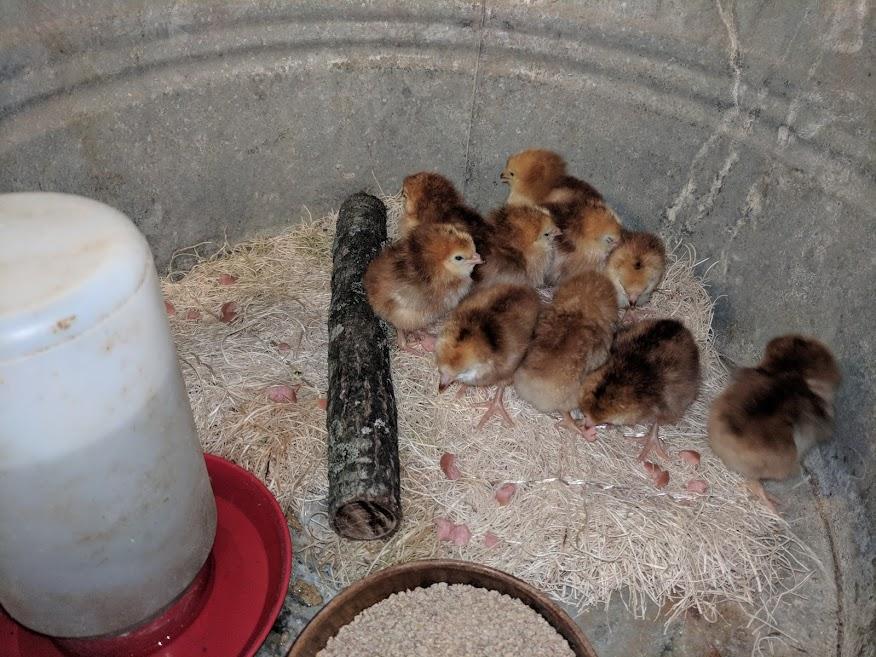 Although guinea keets mature physically far more slowly than chickens or ducklings, mentally they are often more mentally advanced. Place a piece of tree branch or firewood in the brooder for the young guineas to perch upon and toss in a small piece of hot dog or lettuce for them to scramble after like it is a football to entertain them during captivity.
Although guinea keets mature physically far more slowly than chickens or ducklings, mentally they are often more mentally advanced. Place a piece of tree branch or firewood in the brooder for the young guineas to perch upon and toss in a small piece of hot dog or lettuce for them to scramble after like it is a football to entertain them during captivity.
Guineas, more so than other types of poultry, become bored easily when they cannot embrace their ingrained roaming and foraging tendencies and can often take out their angst on each other.
Conclusion
Preppers who can master the basics of guinea husbandry will have a low maintenance, entertaining, and cost-effective predator tracker roaming around their homestead. They will more than earn their keep by protecting your valuable meat and egg birds, and sounding their shrill alarm when they sense a threat to their territory and the prepper retreat as a whole.
